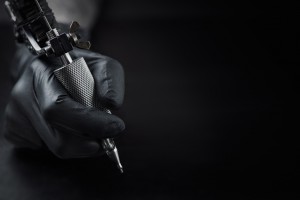 The “Dermal Abyss” has recently been announced by researchers at MIT and Harvard Medical School. This health-monitoring tattoo can turn a person’s body surface into an interactive display by changing color depending on health conditions. This development could have potentially large mainstream applications.
The “Dermal Abyss” has recently been announced by researchers at MIT and Harvard Medical School. This health-monitoring tattoo can turn a person’s body surface into an interactive display by changing color depending on health conditions. This development could have potentially large mainstream applications.
The tattoo can react to changes in the body’s interstitial fluid thanks to the optical biosensors tattooed into the skin. The Dermal Abyss may be the solution to finding an easy to wear and bio-compatible health-monitoring tool, a major goal in the medical device industry.
While about 49% of people with tattoos think the reputation of the studio or artist is the most important factor in choosing where to get inked, these bioelectronic tattos would serve an entirely different purpose. These tattoos bring the world one step closer to genuine cyborg technology, which could attract many of the same body modification fans that already sport tattoos and piercings.
Currently, there are silicon-based implantable devices, but those aren’t considered biocompatible. There is a desire to measure blood pressure, skin temperature, brain activity, and glucose levels, but no device that does all of those while allowing a smooth integration into everyday life.
The market for health-monitoring wearable devices surpassed $13 billion in 2016. Despite their success, these devices often don’t allow users to have direct access to relevant biomarkers.
By swapping out traditional ink for bio-sensing inks, the new ink can alter color in response to the interstitial fluid, allowing the pH sensor to change colors for different indicators. Currently, the Dermal Abyss was developed as a proof of concept and is only being used on pigskin. For a health-monitoring tattoo to be ready for market, new inks would need to be developed so they don’t fade as quickly. The U.S. Food and Drug Administration would likely want to have their say as well.
While people have expressed concerns for things like human microchipping in the past, the Dermal Abyss simply builds on the body modification process. Just a few decades ago, only a small percentage of people had tattoos, but today this form of body modification is ubiquitous, especially among younger people. The average woman will change her hairstyle 104 times in her lifetime, and many young people use tattoos as another form of self expression.
If the Dermal Abyss can combine medical technology with self expression, it could disrupt two industries at once.
Personal health is something people like to have full control over. Privacy concerns seem to be the main issue with this new tattoo technology, since the ink could be seen by anyone. But once all bugs are removed, the ink could be used for a variety of applications. It could even be made invisible and readable only under certain lights.
“The purpose of the work is to light the imagination of biotechnologists and stimulate public support for such efforts. These questions of how technology impacts our lives must be considered as carefully as the design of the molecular sensors patients may someday carry embedded in their skin,” said Nan Jiang, Harvard Medical School, contributor to the Dermal Abyss development.






